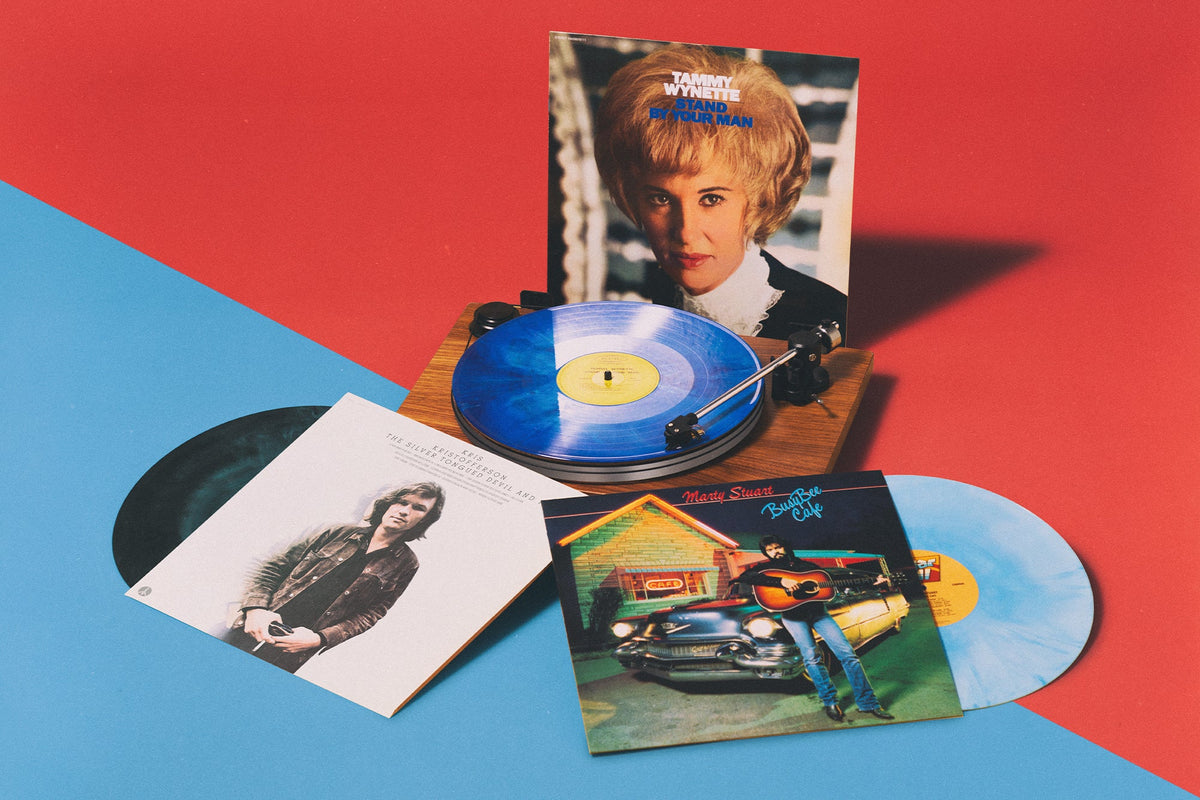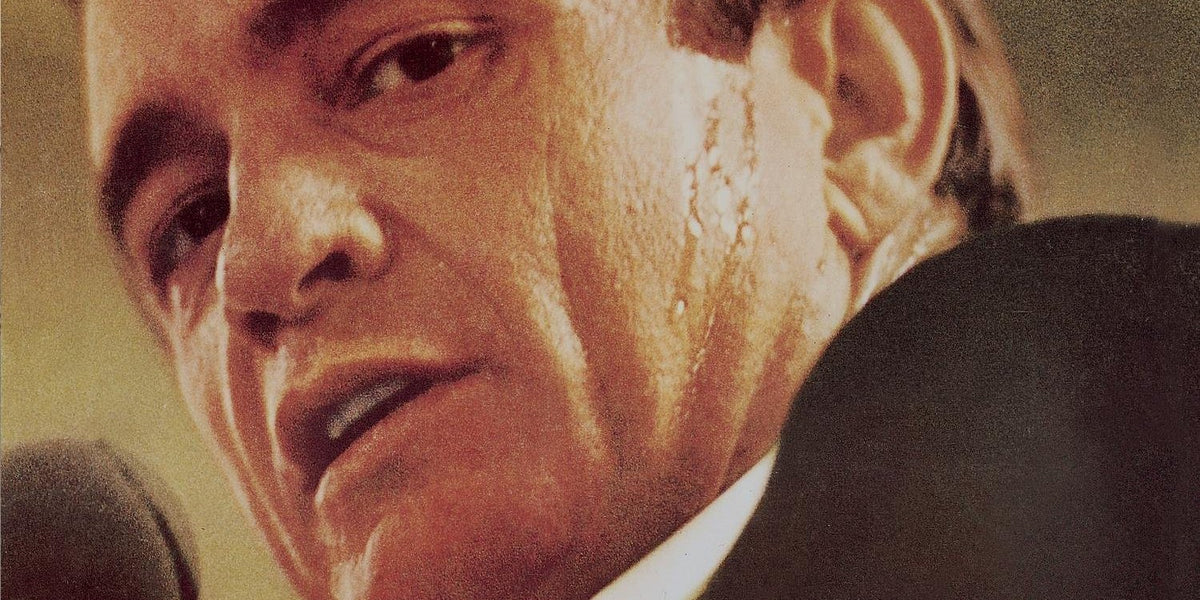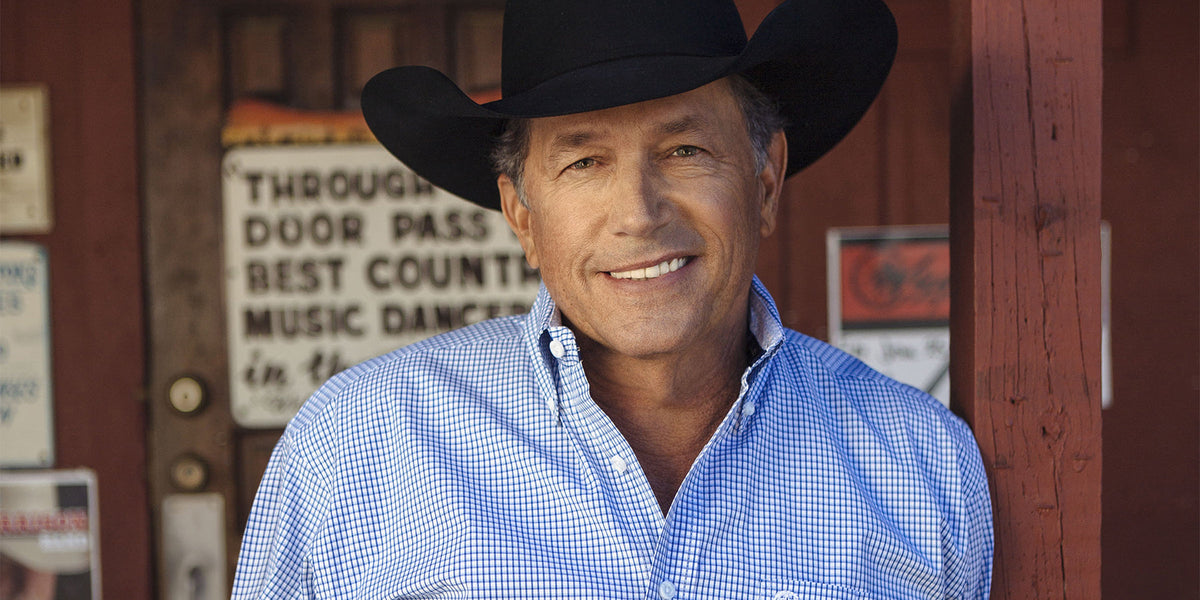Marty Stuart’s Star-Studded ‘Busy Bee Cafe’
On the 1982 album from the country and bluegrass wunderkind
The moment country music was born, it started dying — at least according to a particular substrate of purists. For decades, they have dug in their heels for fiddle, for mandolin, for harmonies. Every so often, they get a win, pulling the rope over to their side in the endless tug-of-war between country music that incorporates the pop trends of the day (for both creative and commercial reasons), and country music that prioritizes mining the music’s widely mythologized tradition.
The early 1980s were one of those moments when the pendulum started to swing back toward the acoustic and the vintage, a reaction to the glories and failures of disco country and Hollywood’s brief love affair with country music and culture (films like Urban Cowboy, 9 to 5, Honeysuckle Rose, etc.). The release of George Strait’s Strait Country, John Anderson’s pair of self-titled albums and Ricky Skaggs’ Waitin’ for the Sun to Shine, as well as the emergence of Reba McEntire, helped encourage revivalist tendencies in 1981. But rather than start a trend, it seemed more like those artists tapped a latent current that was there all along — creating new opportunities for younger musicians who had been honing their skills at honky-tonks and obscure festivals all along.
Marty Stuart was one of those artists. On 1982’s Busy Bee Cafe, widely received as Stuart’s debut despite technically being his second release, the singer and mandolin player flaunted his real country bona fides via both his prodigious picking and the gaudy talent among the album’s personnel — earned in the course of a career that had already, apocryphally, lasted a decade in spite of the fact that Stuart was just 24 years old when the album was released. Far from being an appetizer to Stuart’s eventual commercial success, Busy Bee instead showcases his deep reverence for his musical forebears, radio playability be damned. The folksy release falls in line with a persistent strain of traditionalism even more than it does the commerce-minded revivals of Strait and Skaggs — a strain that endures today, fueled in part by inspiring performances like those captured on this album.
Originally from Philadelphia, Mississippi, a small town near the state’s center, Stuart learned guitar and mandolin young and, two years after a transformative experience seeing Bill Monroe live, was a professional at 12, playing alongside venerable gospel-bluegrass ensemble The Sullivans. A year later, he was accompanying none other than perhaps bluegrass’s biggest name, Lester Flatt, after a chance encounter with his mandolin player. Stuart played in Flatt’s band, The Nashville Grass, for the final years of the legend’s career, and briefly led the ensemble after Flatt’s passing in 1979.
There are a number of video clips from this period, disarming both for the fact that such staunchly old-time music (“Keep the drums out,” Flatt reportedly told his bandmates on his deathbed) had a place on national television, and for Stuart’s flawless, effortless, rapid-fire picking. On stages with men decades older than himself, Stuart played with ease and an almost smirking confidence — intoning harmonies in his still-boyish voice on The Porter Wagoner Show, or taking an otherworldly solo on some similar variety hour.
Those performances helped put him on the radar of other greats of the genre much more than his recorded debut as a bandleader, an eclectic 1978 collection of covers called Marty (With A Little Help From My Friends), released by a small Fort Worth-based bluegrass label called Ridge Runner Records. He played with Vassar Clements and Doc Watson while picking up session work piecemeal before an even bigger break came. In 1980, Johnny Cash recruited Stuart to join his backing band the Tennessee Three, initiating a creative relationship that would last the rest of Cash’s life — in spite of the fact that Stuart married and divorced Cash’s daughter Cindy in the interim.
While backing Cash, Stuart recorded Busy Bee Cafe — finally enough of a name on his own to garner a Billboard review of the album (though still with little of the attendant commercial appeal one might expect).
The release was named, ironically (or not) enough for a blues venue in Stuart’s hometown that he remembers frequenting when he was young. “The Busy Bee Cafe was the first place I heard rhythm and blues, saw people dancing to live music, and witnessed musicians dressed in their snappy outfits with personal style,” he said later, citing renditions of Tommy Tucker’s “Hi-Heel Sneakers” as especially memorable. “My original goal in life was inspired by what I witnessed at the Busy Bee.” Since, it’s become a mixed-use apartment building called the Busy Bee Suites — a piece of the redevelopment Stuart has been working to spark in Philadelphia, in part through the ongoing construction of a museum called the Marty Stuart Congress of Country Music, meant to house his vast personal collection.
The album was a perfect mirror of his life as a performer to that point, chock full of the kinds of legends he’d spent the first decade of his career learning from and playing alongside. Cash is Stuart’s duet partner on three of the album’s tracks, predictably stealing the show with his distinctive baritone. None other than banjo icon Earl Scruggs plays on two songs, in spite of his musical rift with Flatt that was partially responsible for Stuart’s long apprenticeship under Scruggs’ late long-time collaborator. Doc Watson and his son Merle contributed throughout, while Watson’s bassist T. Michael Coleman and dobro player Jerry Douglas, who has since been a fixture of every Nashville session from Garth on down (commerce-wise), rounded out the album’s core trio. Glen Campbell band member Carl Jackson and Jack Grochmal, who also served as one of the album’s engineers, added a few important touches (Grochmal’s sole musical responsibility was the mildest possible rebellion against Flatt: tapping what sounds like a cajon to give the album’s title track a barely perceptible percussive edge).
Stuart produced the album himself, using a light touch that still showcases all those stellar musicians in the best possible light. The dense bluegrass textures sound airy thanks to just enough reverb, giving the tracks the feeling of some Appalachian festival instead of a stuffy bar or concert hall. It is a soft, modern sound, echoed in the gentle aesthetic Alison Krauss & Union Station would make so popular a decade later. Even by the standards of country’s burgeoning neotraditional movement, the release was staunchly radio-agnostic, mixing instrumental tracks with those featuring Cash (obviously a massive commercial force by that point). Stuart’s willingness to make a record seemingly without considering how it would sell, gathering massive names to play in a little studio in Ashland City, Tennessee, about a half-hour outside of Nashville, for the independent Sugar Hill Records, wasn’t as much a reflection of his artistic orthodoxy as it was of how successful he had already been — playing with his heroes before age 25 and securing his place in country music as a result. Essentially, he could afford a commercial bust, and was willing to risk one to record a casual jam session with a collection of icons that he and few others could gather in one place, thankfully for his listeners then and now. The easy energy of the record is evident even from the smiling photos that pepper the back cover, documenting how the project was recorded with every one sitting in a tight semicircle just as they might have in someone’s living room.
Sugar Hill, then based in Durham, had only been founded a few years prior to the recording of Busy Bee Cafe. The label, which would become one of country’s most respected in the ensuing decades, had found a minor hit early, boosting Ricky Skaggs to his first major-label deal via early LPs Sweet Temptation and Skaggs & Rice; it’s not hard to imagine that they were hoping Marty Stuart, who — like Skaggs — had made his name in a support role, would have a similar appeal (although they must have hoped that, unlike Skaggs, he would remain under their auspices).
Even if it didn’t immediately catapult him to stardom or produce any singles, the album was certainly received well as a cohesive project — still something of a rarity in the country and folk realms. For all its casualness, its songs are neatly constructed and concise, spotlighting its musicians’ ability without devolving into full-on noodling chaos.
From its opening track, Bob Nolan’s “One More Ride,” the release unfolds as the most pleasant kind of chronicle of country music history. Stuart takes the high line, performing admirably against Cash’s forceful vibrato as the western groove lopes along, punctuated by bright fingerstyle guitar solos from Merle Watson. The record, made just a few years before his untimely passing, is one of the later documents of his playing.
The texture of the string instruments really shines on “Blue Railroad Train,” which again feature’s Merle’s fingerpicking alongside his father’s timeless singing. Stuart riffs on Merle’s licks on mandolin, and trades verses with Doc, affirming his place in a seamless bluegrass conversation. “I Don’t Love Nobody,” the album’s first instrumental piece, continues the discussion as Doc and Stuart go back and forth on guitar over the Flatt arrangement to whimsical, contemporary effect.
Stuart’s mandolin takes center stage on “Watson’s Blues,” an instrumental that finds him playing alongside Doc Watson — just the way the song’s composer, Bill Monroe, had done a few decades prior. “Busy Bee Cafe,” the title track, is the first on the release penned by Stuart himself. An ode to the Philadelphia juke joint where he found so much inspiration (“Hi-Heel Sneakers” earns a mention), the song features Stuart’s mellow vocals and Merle’s graceful slide playing over its rapid (decidedly not bluesy) patter. Scruggs joins for his and Flatt’s classic composition “Down The Road,” and then Cash returns to reprise one of his early singles, “Hey Porter” — the railroad anthem perfectly painted by Doc’s harmonica train whistle and the chugging of seemingly endless layers of strings, arranged loosely but precisely.
The second of Stuart’s compositions on the release, “Boogie For Clarence,” lives up to its title: There’s a real groove to this instrumental, intended as a tribute to Byrds guitarist Clarence White, which Stuart takes advantage of to solo over on both guitar and mandolin. The band’s vocals are showcased on the churchy Flatt composition “Get In Line Brother,” with Cash taking the bottom of the three-part harmony. “Soldier’s Joy” is another instrumental track featuring Stuart going toe-to-toe with Scruggs in a veritable pick-a-thon, Stuart picking up the guitar to contend against Scruggs’ banjo.
For the last track, the rock-tinged original composition “Long Train Gone,” Stuart offers the album’s only hint of crossover experiments in the future. The bass comes to the forefront, and Stuart trades in delicate layers of bluegrass strumming for a few well-placed power chords and an electric guitar solo. The conclusion fades out, a gentle, eclectic allusion to some sounds to come.
After the release of Busy Bee Cafe, Stuart would finally make his way to a major label, bouncing between Columbia and MCA before accruing a collection of top-10 hits on the country charts in the early ’90s. Eventually, he would make his way back to Cash and to the world of Americana, broadly understood — making music not to reach the widest possible audience, but an audience that appreciated his deeply refined musicianship and unshakable country bona fides.
Russell Barnard, editor and founder of Country Music Magazine, explores this very tension in the original release’s liner notes. “Sugar Hill artists and the label share a love for traditional country music, but I doubt any of them would say they want to make uncommercial records,” he writes. “This record is no less ‘commercial’ because it is honest to ‘tradition.’”
Such was the ethos of those ’80s neotraditional artists who found a marriage of the popular and the vintage that took them to the top of the charts — and the ’90s bluegrass artists (again, see Alison Krauss) whose success and sound Stuart anticipated with Busy Bee Cafe. Even 40 years on, this “old-fashioned” record sounds newer than most of its contemporary equivalents. The reason is simple: you just don’t find many musicians better than these, and it doesn’t take any knowledge of country music past or present to hear that.
Natalie Weiner is a writer living in Dallas. Her work has appeared in the New York Times, Billboard, Rolling Stone, Pitchfork, NPR and more.
Related Articles
Join the Club!
Join Now, Starting at $36Pages







